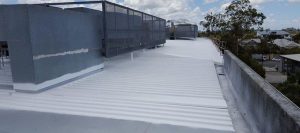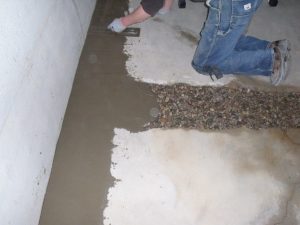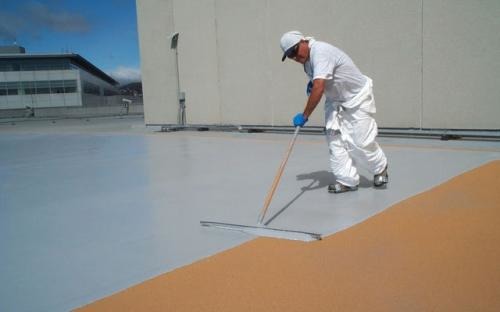Understanding Waterproofing
Waterproofing is a crucial aspect of building maintenance and construction. It ensures that structures remain dry and protected from water damage. Whether you’re dealing with a basement, roof, or any other part of your home or building, finding the easiest and most effective waterproofing method is essential. In this article, we’ll explore some of the simplest and most reliable ways to keep your property water-resistant.
1. Exterior Waterproofing
One of the most effective and straightforward methods to waterproof your home is through exterior waterproofing. This method involves creating a barrier on the outside of your building to prevent water from penetrating the foundation or walls. It’s highly recommended for both new construction and existing structures. Here are some key steps involved in exterior waterproofing:

Key Steps in Exterior Waterproofing
- Excavation: The first step involves digging around the foundation to expose the exterior walls.
- Clean the Surface: Clean and inspect the surface for any cracks, holes, or damage that needs repair.
- Apply Waterproof Membrane: Install a waterproof membrane, which can be in the form of a liquid, sheet, or spray, to create a barrier against moisture.
- Drainage System: Ensure proper drainage by adding weeping tiles and a sump pump to divert water away from the foundation.
- Backfill and Restore: Once the membrane is in place, backfill the excavated area and restore the landscaping.
Exterior waterproofing is a long-term solution that provides excellent protection against water intrusion. It’s best performed by professionals with experience in the field, as it requires specialized knowledge and equipment.
2. Interior Waterproofing
Interior waterproofing is another effective method to keep your basement dry and prevent water damage. This approach focuses on managing water that has already entered your home. While it may not be as comprehensive as exterior waterproofing, it’s often more accessible for DIY enthusiasts. Here’s how it works:
Key Steps in Interior Waterproofing
- Seal Cracks and Holes: Identify and seal any cracks or holes in the basement walls and floor to prevent water seepage.
- Install Interior Drainage System: Place a perimeter drainage system, like a French drain, to collect and redirect water to a sump pump.
- Use Waterproof Paint or Coating: Apply waterproof paint or coating to the interior walls to prevent moisture penetration.
- Proper Ventilation: Ensure good ventilation to reduce humidity and the risk of mold growth.
- Regular Maintenance: Periodically check for any signs of water damage and address them promptly.
Interior waterproofing is a more cost-effective option compared to exterior waterproofing. However, it’s essential to address the root causes of moisture issues, such as poor drainage, to achieve the best results.
3. Waterproofing Sealants
If you’re looking for a quick and easy way to waterproof various surfaces, waterproofing sealants can be a handy solution. These sealants come in various forms, including liquid, spray, and caulk, and are suitable for a wide range of applications. Some common uses of waterproofing sealants include:
Common Uses of Waterproofing Sealants
- Roof Repairs: Sealants can be used to patch up small roof leaks and prevent water from entering your home.
- Bathroom and Kitchen: Waterproof sealants can protect tiles and grout from moisture, preventing water damage and mold growth.
- Foundation Cracks: Seal foundation cracks with waterproof sealants to keep your basement dry.
- Windows and Doors: Seal around windows and doors to prevent water from seeping inside.
While waterproofing sealants are convenient for small-scale projects and quick fixes, they may not be a long-term solution for extensive waterproofing needs. Regular maintenance and reapplication may be required.
Choosing the Right Method for You
Ultimately, the easiest waterproofing method for you depends on your specific needs, budget, and the extent of the waterproofing required. Exterior waterproofing provides the most comprehensive protection but can be costly and is best left to professionals. Interior waterproofing is more accessible for DIY enthusiasts and can address existing moisture issues effectively. Waterproofing sealants are handy for quick fixes and small-scale projects but may not be a long-term solution for significant waterproofing needs.
Before deciding on the best method, assess the condition of your property and consult with a waterproofing expert if necessary. Combining methods and taking proactive measures to prevent water intrusion will ensure your home or building remains dry and secure for years to come. For different waterproofing methods see here.


